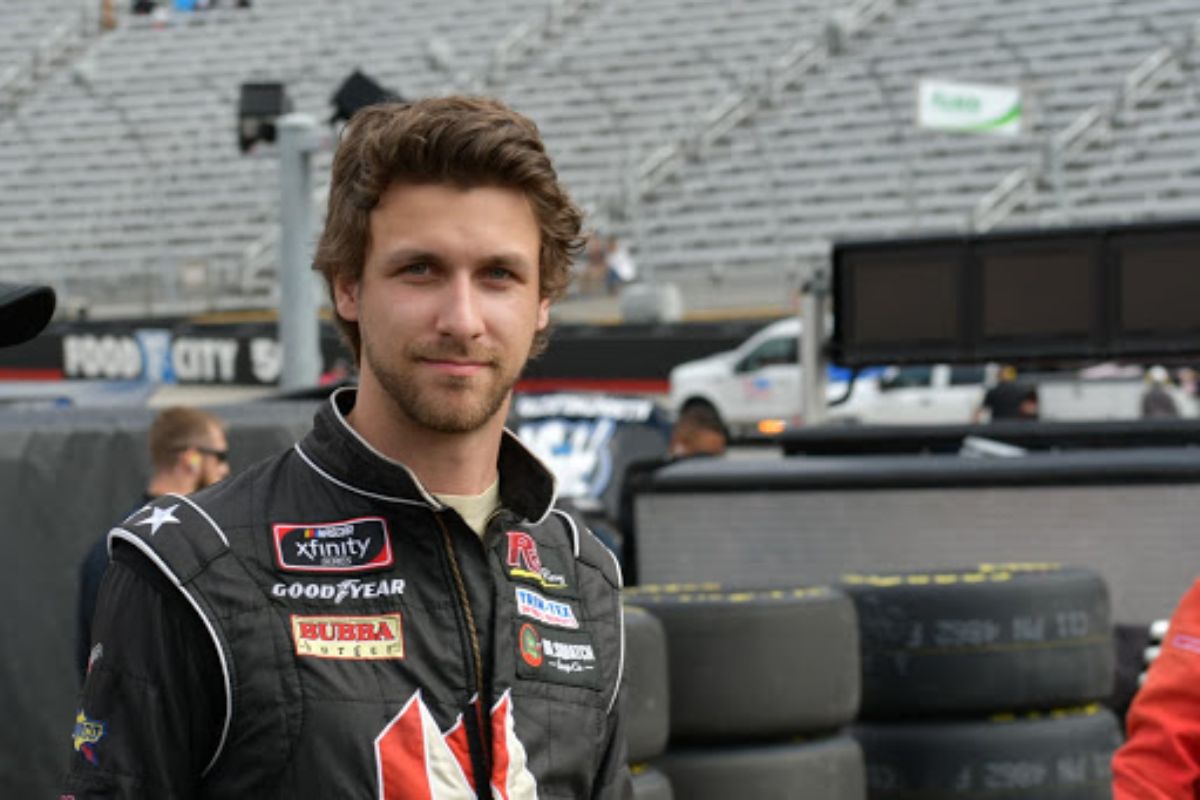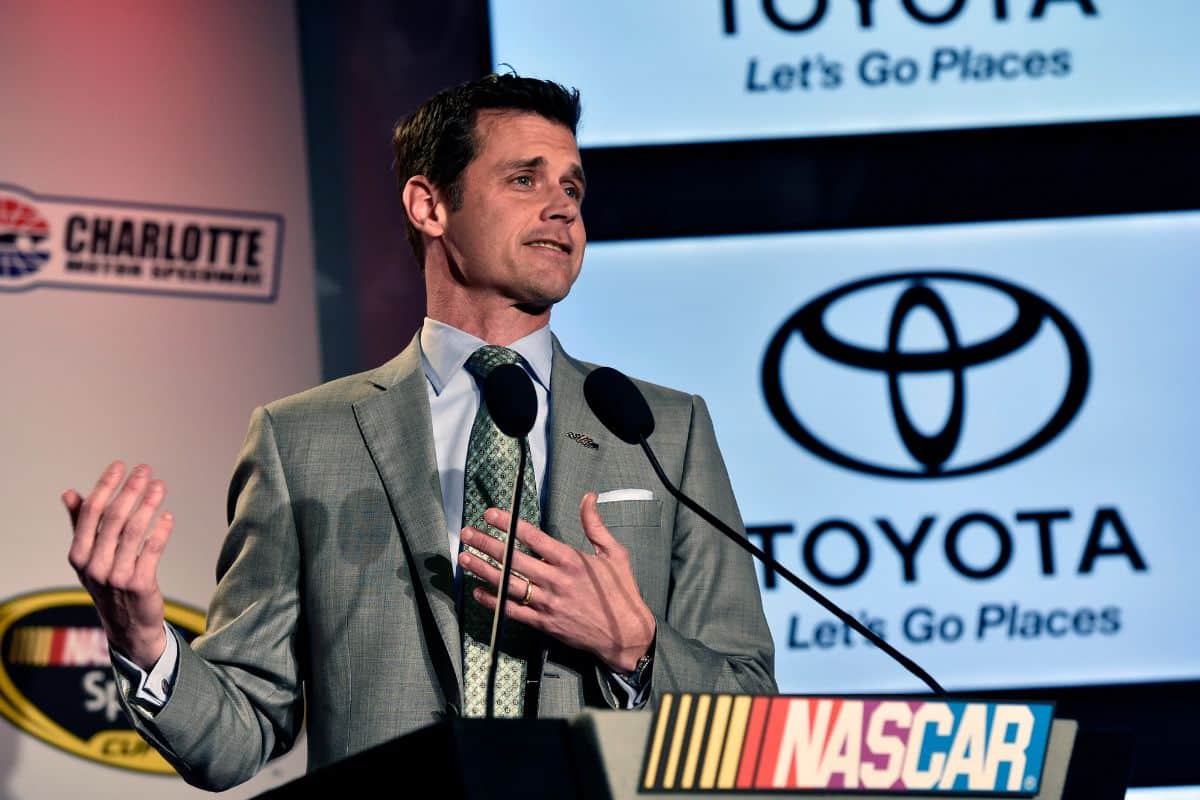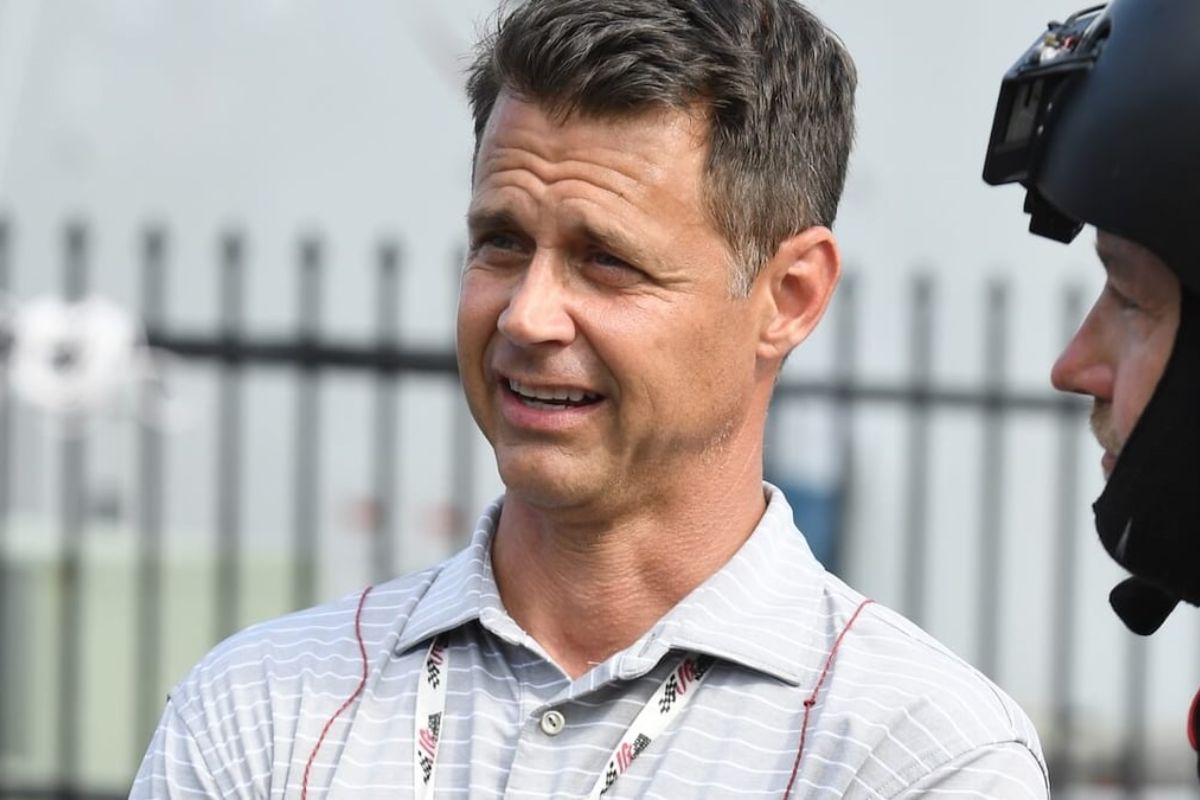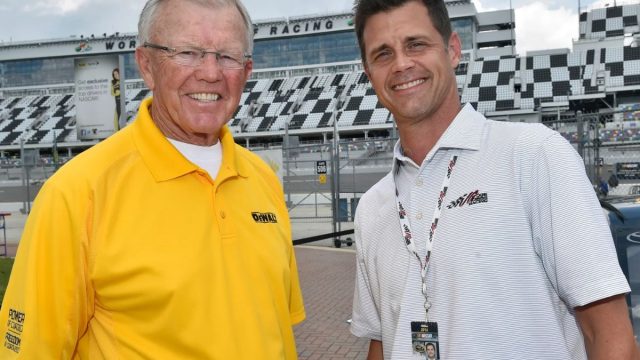Dave Alpern Clarifies Mid-Season Sponsor: In NASCAR sponsorships, Dave Alpern’s recent insights show the critical role of pre-season agreements and the fluid nature of mid-season adjustments. The concept of ‘horse trading’—a strategic negotiation process—emerges as pivotal, allowing sponsors to realign race dates to optimize their marketing initiatives. This practice, supported by data analytics, guarantees a maximized return on investment. As mid-season evaluations and recalibrations become routine, Alpern’s perspective shows how these adjustments strengthen sponsor relationships and enhance brand value.
Key Highlights
- ‘Horse trading’ allows sponsors to swap dates to fit marketing agendas, providing flexibility in mid-season adjustments.
- Sponsorship agreements are completed well before the season starts but can be adjusted to maximize ROI.
- Teams continuously evaluate and adjust sponsorships to strengthen relationships and maintain cohesive strategies.
- A data-driven approach tailors mid-season sponsorship changes to ensure high returns on investment.
- Mid-season adjustments in sponsorships help align marketing strategies with real-time performance and audience engagement.
Sponsorship Dynamics in NASCAR
Given the intricate financial framework of NASCAR, sponsorship dynamics are a critical factor influencing team operations, marketing strategies, and overall visibility within the sport. Sponsorship in NASCAR is not merely a secondary revenue stream but a cornerstone of the sport’s economic model. In the 2022 NASCAR Cup Series alone, sponsors invested over $1.4 billion, showing the financial magnitude of these partnerships. This investment permeates different aspects of the sport—from naming rights of entire series, such as the Xfinity Series, to intricate branding on racecars, driver suits, and even pit crew uniforms.
The multifaceted sponsorship landscape in NASCAR is characterized by high-stakes contracts and branding opportunities. For instance, a primary sponsor can spend upwards of $15-35 million per season for premium space on a top-tier car. Secondary sponsors, who secure smaller but still significant branding spots, might invest between $2-10 million. The presence of sponsors like Monster Energy, which have naming rights for series and events, further exemplifies the scale and impact of these financial commitments.
Moreover, sponsorship deals often go beyond mere visibility, integrating complex activation strategies that engage fans through social media, in-race promotions, and hospitality packages. These deals are vital for teams, affecting everything from technological advancements in car performance to the hiring of top-tier talent. The fluctuating nature of sponsorship agreements, whether they span multiple seasons or adjust mid-season, adds complexity. This dynamism requires teams to be agile, adapting marketing strategies and operational plans in real-time to optimize sponsor engagement and financial returns.

Josh Bilicki’s Debut with Multiple Sponsors
Josh Bilicki’s debut for Joe Gibbs Racing at Portland International Raceway, marked by the unique presence of dual primary sponsors DiTEC Marine Products and Trim-Tex Drywall Solutions, shows the evolving strategy of leveraging multiple sponsorships to optimize financial and branding opportunities in NASCAR. This strategic approach not only improves the financial viability of racing teams but also optimizes brand exposure for sponsors across diverse audience segments.
The No. 19 Toyota GR Supra, driven by Bilicki, showcased the logos of these sponsors prominently, along with secondary sponsors Rich Mar Florist and Evolution Edges. DiTEC Marine Products and Trim-Tex Drywall Solutions, representing different industry verticals, highlight the multifaceted appeal of NASCAR as a marketing platform. Moreover, the inclusion of Rich Mar Florist, a partner with Pocono Raceway and Dover Speedway, exemplifies a strategic alignment, fostering a consistent brand presence across multiple racing events.
| Sponsor | Industry | Sponsorship Role |
|---|---|---|
| DiTEC Marine Products | Marine Products | Primary Sponsor |
| Trim-Tex Drywall Solutions | Construction Materials | Primary Sponsor |
| Rich Mar Florist | Floral Services | Secondary Sponsor |
| Evolution Edges | Industrial Solutions | Secondary Sponsor |
Insight from Dave Alpern
Given Josh Bilicki’s multi-sponsor debut, Dave Alpern, President of Joe Gibbs Racing, elucidates the meticulous planning and strategic ‘horse trading’ involved in orchestrating sponsor partnerships to align with market dynamics and promotional objectives throughout the NASCAR season. Alpern’s insights into this complex process reveal a multifaceted approach that optimizes brand visibility and engagement.
“Generally, we work out the entire sponsor calendar before the season starts. We have some horse trading between different companies because each company has different markets that might be more important. Different times of the year for different promotions and things that are important for them. So once the season goes, we have a pretty good idea for the whole year what the sponsor calendar is from each week.” – (Alpern)
Sponsorship agreements are often solidified well before the season begins, involving detailed sponsor calendars that strategically align with key markets and promotional windows. This forward-thinking planning guarantees that each sponsor receives excellent exposure tailored to their specific target audiences. Alpern emphasizes that the ‘horse trading’ process is critical, allowing sponsors to negotiate and swap dates or events to better fit their marketing agendas. This flexibility is crucial; it enables sponsors to exploit peak market conditions and align their promotional efforts with major NASCAR events.
The strategic intricacies of these arrangements are further shown by the data-driven approach taken by Joe Gibbs Racing. By analyzing demographic trends and historical performance metrics, the team can tailor sponsorship deals to ensure the highest return on investment. For instance, sponsors targeting millennial audiences might prioritize race events known for high social media engagement, while those focusing on brand loyalty might choose races with traditionally high viewership ratings.

Cost of NASCAR Sponsorships
Understanding the cost of NASCAR sponsorships reveals the substantial financial commitments required for brand visibility, with primary sponsorship for Cup Series races ranging from $350,000 to $500,000 per event. This hefty investment shows the premium value associated with top-tier motorsport marketing. Brands seeking a season-long partnership can expect even higher expenditures, with the advantage of dictating paint schemes, logo placements, and organizing promotional activities throughout the season.
The financial outlay for sponsoring a race team is indicative of the extensive reach and engagement NASCAR offers. With the Cup Series being the pinnacle of stock car racing, the visibility and audience engagement metrics justify the substantial costs. Sponsorship arrangements in NASCAR are multifaceted; a single-race sponsorship allows companies to tailor the car’s design and branding to align with specific marketing campaigns or product launches. This flexibility can be particularly advantageous for corporations looking to make a significant impact with a concentrated effort.
Moreover, the cost structure reflects the strategic value of NASCAR sponsorships. The $500,000 per race ceiling is not merely a marketing expense but an investment in brand equity, consumer loyalty, and direct engagement with a dedicated fan base. The demographic alignment of NASCAR audiences, often characterized by strong brand loyalty and high engagement rates, further amplifies the return on investment for sponsors.
Benefits and Considerations for Sponsors
While the financial outlay for NASCAR sponsorships is significant, the vast exposure to over 50 million viewers provides an unparalleled platform for companies seeking to enhance brand visibility and consumer loyalty. The symbiotic relationship between sponsors and fans is a cornerstone of NASCAR’s appeal. Sponsors not only benefit from extensive advertising impressions but also from the deep-rooted allegiance fans have toward their favorite drivers and teams. Such loyalty often translates into increased consumer preference and purchasing behavior, thereby delivering a substantial return on investment (ROI) for the sponsoring brands.
Companies meticulously evaluate their sponsorship investments by analyzing metrics such as brand exposure, consumer engagement, and promotional outcomes. High-profile drivers attract more lucrative sponsorship deals due to their extensive fan base and media coverage, thereby driving up the costs for teams with prominent drivers. To guarantee a favorable ROI, sponsors deploy sophisticated tracking mechanisms to monitor advertising impressions and gauge consumer behavior.
The benefits, however, come with their own set of challenges. High financial commitments can be overwhelming, particularly for smaller companies. Variable ROI and the complexity involved in tracking the effectiveness of such sponsorships necessitate a strategic approach. Sponsors must weigh the potential for substantial brand exposure and consumer loyalty against the financial and operational intricacies inherent in NASCAR sponsorships.

News in Brief: Dave Alpern Clarifies Mid-Season Sponsor
Dave Alpern’s elucidation of mid-season sponsor changes in NASCAR shows the importance of pre-season agreements and strategic ‘horse trading’ to align sponsorships with marketing objectives.
This data-driven approach guarantees the best ROI for sponsors while maintaining robust relationships. Continuous evaluation and adjustment fortify brand value for teams and partners, exemplifying the intricate interplay between sponsorship dynamics and financial investment in motorsports.
Such insights are invaluable for stakeholders aiming to enhance the efficacy of their sponsorship strategies.
Also read: NASCAR Teams Payday Secrets Exposed: It’s All About Points!
